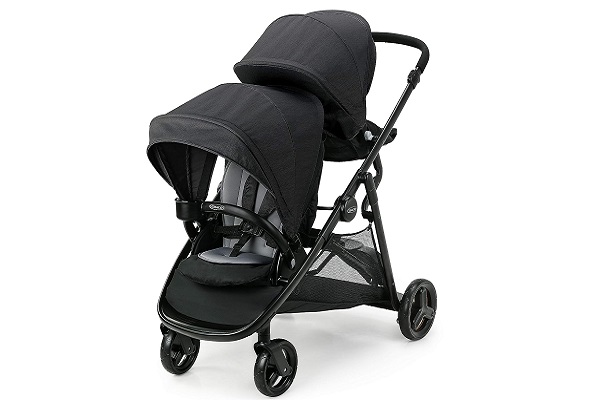Pregnancy is a remarkable journey filled with anticipation and profound changes, both physically and emotionally. As the body adapts to nurture new life, various challenges arise, necessitating effective solutions to enhance comfort and well-being. One such solution that has gained significant attention is the pregnancy support belt. This indispensable accessory is not merely a trend but a vital aid for many expectant mothers. Tech Tired, a leading news publishing site, has also highlighted the pivotal role of pregnancy support belts in its latest health segment. Let’s delve into why these belts are essential and how they contribute to a more comfortable pregnancy experience.
Understanding the Pregnancy Support Belt
A pregnancy support belt is a specially designed garment that wraps around the abdomen, providing support to the lower back and belly. It helps distribute the weight of the growing uterus more evenly across the back and abdomen, alleviating some of the discomfort associated with pregnancy. Available in various sizes, designs, and materials, these belts cater to different stages of pregnancy and personal preferences.
Alleviating Back Pain
Back pain is a common complaint during pregnancy, often starting in the second trimester and intensifying as the pregnancy progresses. The growing uterus shifts the center of gravity, causing the lower back to curve more than usual. This change in posture can lead to muscle strain and back pain.
A pregnancy support belt provides targeted support to the lower back, helping to stabilize the spine and reduce muscle strain. By redistributing the weight more evenly, it can help alleviate the pressure on the lower back, thus mitigating pain and discomfort. Many women find that wearing a support belt significantly improves their ability to perform daily activities without the constant distraction of back pain.
Reducing Pelvic Girdle Pain
Pelvic girdle pain (PGP) is another prevalent issue during pregnancy, characterized by pain in the pelvic region. This discomfort can extend to the lower back, hips, and thighs, making it challenging to walk or even stand for extended periods. PGP often results from the loosening of ligaments and increased joint mobility due to hormonal changes.
A pregnancy support belt can offer stability to the pelvic region, reducing the mobility of joints and ligaments. By providing compression and support, the belt helps alleviate the pain associated with PGP, allowing for better mobility and comfort.
Enhancing Posture
Maintaining good posture becomes increasingly tricky as pregnancy progresses. The added weight of the baby can cause the pelvis to tilt forward, leading to an exaggerated arch in the lower back. This change in posture not only contributes to back pain but can also affect overall balance and coordination.
Wearing a pregnancy support belt encourages proper posture by supporting the lower back and abdominal muscles. It acts as a gentle reminder to keep the spine aligned, reducing the tendency to slouch or lean forward. Improved posture can also enhance breathing and digestion, contributing to overall well-being.
Providing Support During Exercise
Exercise is crucial during pregnancy for maintaining fitness, reducing stress, and preparing the body for childbirth. However, the physical demands of exercise can be challenging with the added weight and changes in the body’s centre of gravity. A pregnancy support belt can provide additional support during physical activities, reducing the strain on the lower back and abdominal muscles.
Many pregnant women find that wearing a support belt during exercise allows them to continue their fitness routines with greater comfort and confidence. It can help stabilize the body, reduce the risk of injury, and enhance overall performance.
Relieving Round Ligament Pain
Round ligament pain is a sharp, stabbing pain in the lower abdomen or groin area every day during the second trimester. It occurs as the ligaments that support the uterus stretch and thicken to accommodate the growing baby. Sudden movements or changes in position can exacerbate this pain.
A pregnancy support belt provides gentle compression to the abdomen, supporting the uterus and reducing the strain on the round ligaments. It can help minimize the discomfort associated with round ligament pain, making daily movements and activities more manageable.
Supporting the Belly
As the pregnancy progresses, the growing belly can feel heavy. The added weight can pull on the lower back and hips, leading to discomfort and fatigue. A pregnancy support belt can help lift and support the belly, reducing the strain on the back and pelvic muscles. It can make it easier to move around, stand, and sit comfortably.
Supporting the belly also helps to evenly distribute the weight evenly, reducing the pressure on the bladder and improving overall comfort. Many women find that a support belt allows them to continue their daily activities with less discomfort and fatigue.
Postpartum Benefits
The benefits of a pregnancy support belt extend beyond pregnancy. Many women continue to use the belt postpartum to support their abdomen and lower back as their bodies recover from childbirth. The belt can help provide stability and support to the abdominal muscles, aiding in postpartum recovery and reducing discomfort.
Postpartum support belts are often designed with additional features to address the specific needs of new mothers, such as adjustable straps and compression panels. These belts can help new mothers regain their strength and mobility, allowing them to care for their newborns more comfortably.
Choosing the Right Pregnancy Support Belt
When selecting a pregnancy support belt, several factors should be considered:
- Comfort: The belt should be made of breathable, soft materials that do not irritate the skin. Adjustable straps and closures can ensure a secure and comfortable fit.
- Support: Look for a belt that provides adequate support to the lower back and abdomen. Some belts come with additional support panels or inserts for enhanced stability.
- Fit: Choose a belt that fits your body size and shape. Most belts come in various sizes, and some are adjustable to accommodate changes in body size throughout pregnancy.
- Ease of Use: Consider how easy the belt is to put on and take off. Some belts have hook-and-loop closures, while others use buckles or snaps. Choose a design that is convenient for you.
- Activity Level: If you plan to wear the belt during exercise or physical activities, look for a design that allows for a full range of motion and does not restrict movement.
Final Words
Pregnancy support belts are more than just a comfort aid; they are a practical solution to many of the physical challenges associated with pregnancy. From alleviating back and pelvic pain to supporting posture and providing relief from round ligament pain, these belts offer numerous benefits to expectant mothers. As highlighted by Tech Tired, the importance of pregnancy support belts cannot be overstated. They contribute significantly to a more comfortable and manageable pregnancy experience, allowing women to focus on the joy and anticipation of welcoming their new baby. When chosen and used correctly, a pregnancy support belt can be a valuable ally in navigating the physical demands of pregnancy and enhancing overall well-being.





